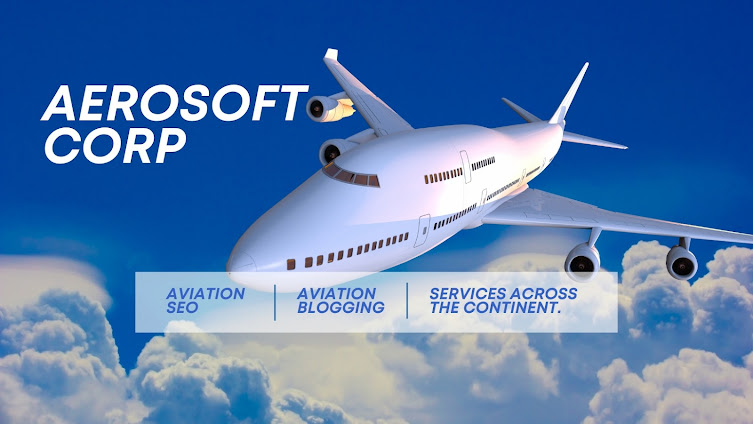Revolutionizing Low-Cost Air Travel in the United States
JetBlue Airways: Revolutionizing Low-Cost Air Travel in the United States
In the dynamic landscape of the aviation industry, JetBlue Airways has emerged as a trailblazer in revolutionizing low-cost air travel in the United States. As an aviation research executive, it is fascinating to delve into the strategic decisions, innovations, and unique business model that have propelled JetBlue to the forefront of the industry. This article will explore the key elements that set JetBlue apart, examining its inception, customer-centric approach, technological innovations, and the impact it has had on the broader aviation market.
I. Inception and Vision:
Founded in 1998 by David Neeleman, JetBlue set out with a bold vision to redefine the airline experience by combining low fares with high-quality service. Neeleman, with a background in successful aviation ventures, aimed to create a carrier that not only offered affordable travel but also prioritized customer satisfaction. This vision laid the foundation for JetBlue's unique approach to low-cost air travel.
II. Customer-Centric Approach:
One of JetBlue's standout features is its unwavering commitment to customer satisfaction. While many low-cost carriers focus solely on price, JetBlue recognized the importance of providing a superior customer experience. The airline introduced amenities like spacious leather seats, complimentary snacks, and live in-flight entertainment – elements typically absent in the low-cost segment. This customer-centric approach garnered significant attention and loyalty, setting JetBlue apart from its competitors.
III. Technological Innovations:
JetBlue has been at the forefront of technological advancements within the aviation industry. The introduction of the EMBRAER 190, a smaller, fuel-efficient aircraft, allowed the airline to access markets that larger carriers deemed unprofitable. Moreover, JetBlue embraced the power of the internet early on, pioneering the use of online booking and e-ticketing systems, streamlining the booking process for passengers.
The airline's commitment to technological innovation extended to in-flight services as well. JetBlue became one of the first airlines to offer complimentary in-flight Wi-Fi, providing passengers with connectivity at 35,000 feet. This move not only enhanced the overall travel experience but also positioned JetBlue as a forward-thinking carrier in an increasingly connected world.
IV. Hub Strategy and Route Expansion:
JetBlue strategically established its focus cities and hubs to optimize operational efficiency. John F. Kennedy International Airport in New York became the airline's primary hub, allowing it to concentrate on high-density routes and offer a comprehensive network. The hub-and-spoke model enabled JetBlue to efficiently connect passengers between various destinations, facilitating both domestic and international expansion.
JetBlue's route expansion strategy was marked by a mix of popular destinations and underserved markets. The airline identified gaps in the market, often targeting secondary airports to reduce operational costs. This approach not only allowed JetBlue to tap into new customer bases but also disrupted the traditional hub dominance of legacy carriers.
V. Mint: Elevating Premium Travel:
In a bold move, JetBlue ventured into the premium travel segment with the introduction of its Mint service. Mint redefined domestic premium travel by offering lie-flat seats, gourmet dining options, and an elevated in-flight experience typically associated with international business class. This innovative product disrupted the premium travel landscape, challenging legacy carriers and positioning JetBlue as a versatile player capable of catering to diverse passenger needs.
VI. Sustainability Initiatives:
JetBlue has proactively embraced sustainability initiatives, acknowledging the environmental impact of aviation. The airline has invested in modern, fuel-efficient aircraft, reducing its carbon footprint. Additionally, JetBlue has engaged in carbon offset programs and is committed to exploring alternative aviation fuels. These sustainability efforts align with evolving consumer preferences and position JetBlue as a responsible and forward-thinking airline.
VII. Challenges and Adaptations:
While JetBlue's journey has been marked by success, it has not been without challenges. The airline faced increased competition, economic downturns, and external factors such as the COVID-19 pandemic. However, JetBlue showcased resilience by adapting its operational strategies, introducing cost-cutting measures, and leveraging government assistance programs to weather turbulent times. These adaptive measures underline JetBlue's ability to navigate the unpredictable nature of the aviation industry.
JetBlue Airways has undeniably revolutionized low-cost air travel in the United States. From its inception with a visionary approach to providing a customer-centric experience, technological innovations, strategic route expansions, and disruptive products like Mint, JetBlue has continually pushed the boundaries of what a low-cost carrier can achieve. As an aviation research executive, analyzing JetBlue's success story not only offers insights into the airline industry's dynamics but also serves as a testament to the power of innovation and customer focus in reshaping an entire market.
Raj Suru
Aviation Research Executive
93983 66643
rajsuru.flyingcrews@gmail.com
www.flying-crews.com
https://surl.li/pbhwq
https://rb.gy/icc1k8
Asiatic International Corp
Products
Our Service
.jpeg)
Online Airline Career Counselling
Online Airline Career Counselling and Books orchestrated by Captain Shekhar Gupt... Show more

Online Airline Career Counselling
Online Airline Career Counselling and Books orchestrated by Captain Shekhar Gupt... Show more
.jpeg)
Counselling For Airline Pilot Training
Airline Pilot Training By Capt Shekhar Gupta Author / Pilot Pilot's Career... Show more
Gallery
Payment QR














.jpeg)


.jpeg)



.jpeg)





No comments:
Post a Comment